I recently spent five days in Theodore Roosevelt National Park, one of my favorite places to shoot. It’s about as “middle of nowhere” as you can get. Unlike many other national parks if you stop on the road to shoot something for an hour maybe only a couple of other cars will come by, or none at all. So it is truly a temple to mother nature!
This area is also where Theodore Roosevelt gained much of his appreciation for the environment when he was a rancher along the Little Missouri River early in his life. Roosevelt is the man responsible for much of the preserved land we have in America today. There hasn’t been a president since him that had such a deep appreciation for the conservation of nature. So Theodore Roosevelt National Park is a special place in our nation’s history as well. It was fun to envision Roosevelt riding his horse along the Little Missouri River in the 1880’s on one of his many rides between Medora and his ranch farther down river. He would have no doubt ridden right by the Cottonwood Campground where I was camping on the banks of the same river. It probably looked pretty much the same to him then as it does to me today. That is the true magic of national parks, it’s like time machine looking back at America before we ever arrived here.
This year as I roamed around I focused a lot on the wild horses that are residents in the park. They are direct descendants of the horses used by the Plains Indians and the early cowboys of the west. Of course I came across some other things as well. Here are some of the better photos…
These two horses put on a nice display for me one afternoon while I was hiking. (I wish they would have done it in better light and not around noon, but I’ll take it) I was photographing two stallions grazing and then a mare came galloping full speed over a hill. She and one of the stallions spent a few minutes running around excitedly greeting each other. It made me a bit nervous standing out in the open with them running and jumping around. Wild horses don’t have the temperament of domesticated horses and can be dangerous. But they didn’t seem at all interested in me.
This is of course what grazing animals do most of the time, but this time at least there was some nice light.
I just can’t resist a few photos of the textures out in the badlands. The layers of soft stone formed from sand and volcanic ash are what give the badlands it’s signature eroded hills.
These are the two stallions that I was photographing before the mare came over the hill. (from the first photo in this post) When wild horses see you they usually head the other direction, or if you are lucky pay no attention, but these guys were very curious what I was doing and came in for a closer look.
This is one of my favorite photos from the trip. I wanted to get a prairie dog “barking” but got lucky with these guys doing a bark in unison for me. (which is more of a squeal than a bark if you ask me) There seems to be no rhyme or reason to when they decide to bark and it happens very fast so it’s harder than you would think to photograph. I spent a lot of time staring though the lens at prairie dogs to capture this.
This black stallion and mare spent a lot of time side by side one morning as I photographed a herd of about a dozen wild horses grazing. It was touching to see their affection for each other.
This isn’t the greatest photograph in the world, but I found this petrified tree fascinating. It’s still upright in the ground right where it was covered by volcanic ash millions of years ago. Now erosion has again brought this tree back into the sunlight. The badlands area was once a subtropical swamp when this cypress tree sprouted. (I’m not an expert in fossilized trees, but I’m assuming it is a cypress judging from it’s size and the fact that many of the petrified trees in the area are cypress trees) There are no signs or even footprints leading out to this tree about 100 yards off the park road. (There are no footprints of man, but plenty of bison hoof prints) It’s one of the reasons I love this park, it’s very untouched. Below is a photo of me next to the tree to show how big it is.
This bison was about 200 yards away from me while I was photographing the petrified tree and I couldn’t resist going over and seeing if he would cooperate for a photo. He seemed very content grazing on the grass and didn’t mind me coming in for a closeup. I maybe got closer to him than recommended, but he seemed more interested in fattening up for the coming winter than someone photographing him.
This wild horse was grazing on the lush grass in a stand of cottonwoods near the Little Missouri River and walked nicely into a shaft of late day light for me.
Another one of the endless texture photos to be had in the badlands.
This wild horse was part of large band of horses that usually stayed far off in the distance in the southeast corner of the park. The last morning they let me get a little closer for a nice sunrise shot.
I can’t pass up a close detail shot of a bison. This guy was right along the road one morning and gave me another chance to capture the dignity and power of these massive animals, this time from the safety of my pickup. I know it sounds kind of lame to photograph wildlife from your vehicle, but I have found that the pickup works nicely as a blind. The wildlife are used to the occasional vehicle and will pay much less attention to you in a car than if you were hiking. Besides, being 20 feet from a large bison is not a good idea on foot.
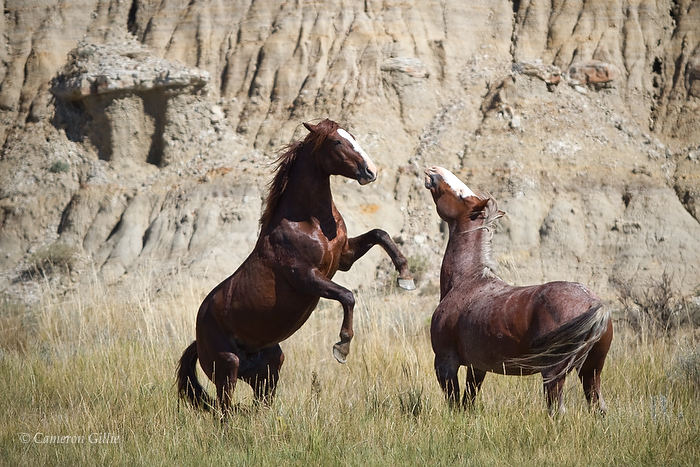
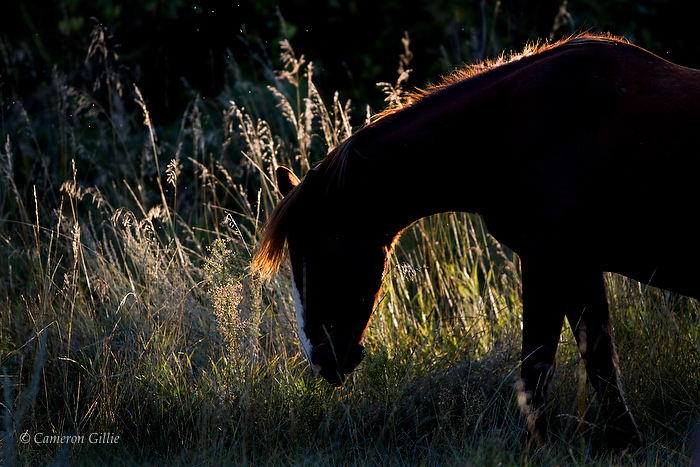
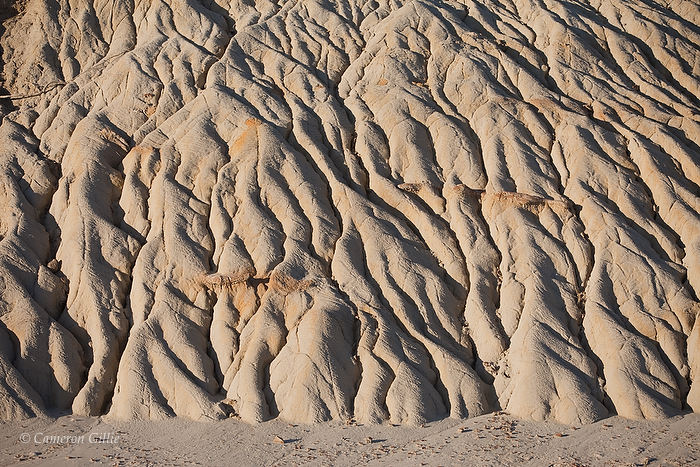
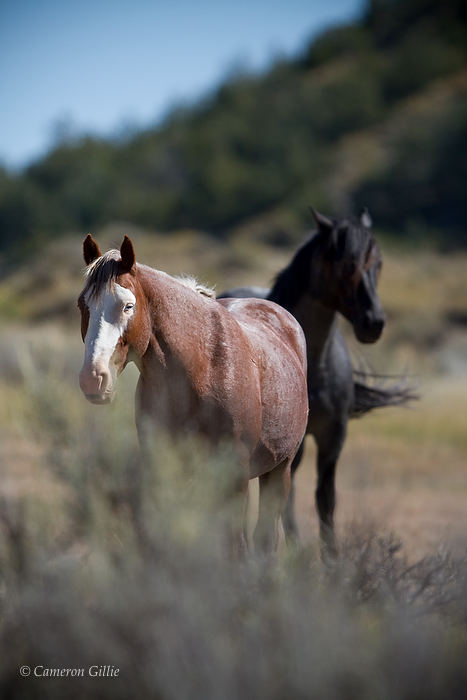
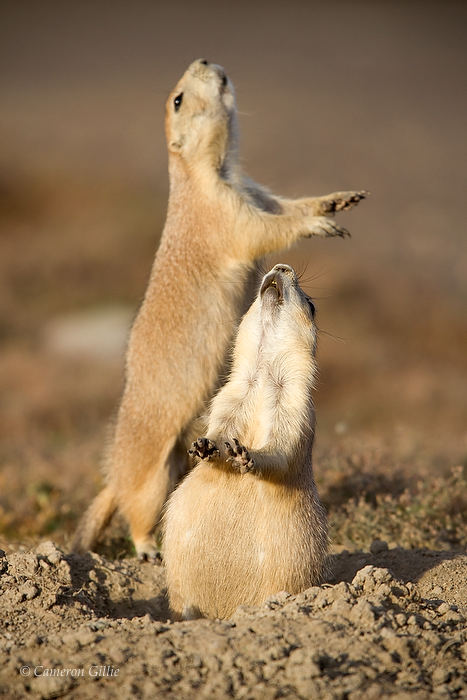
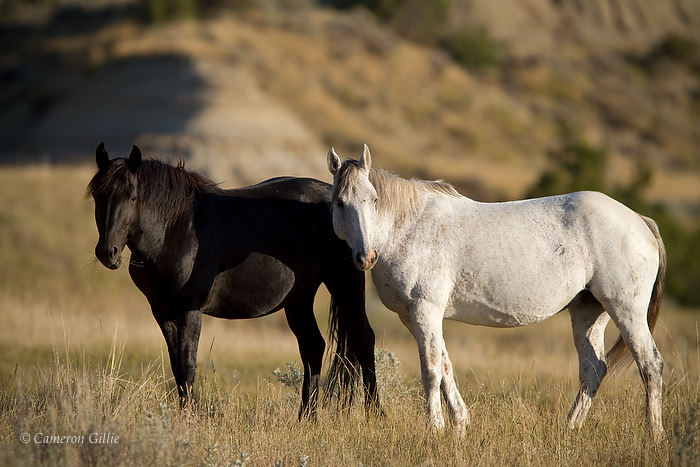
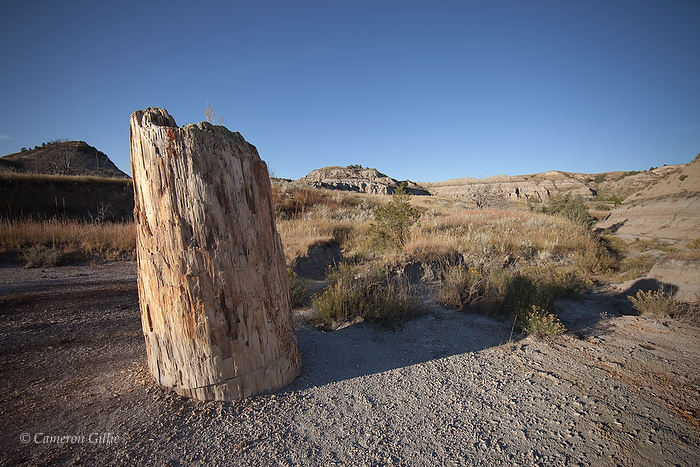
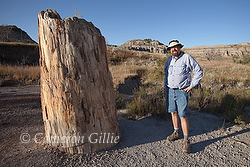
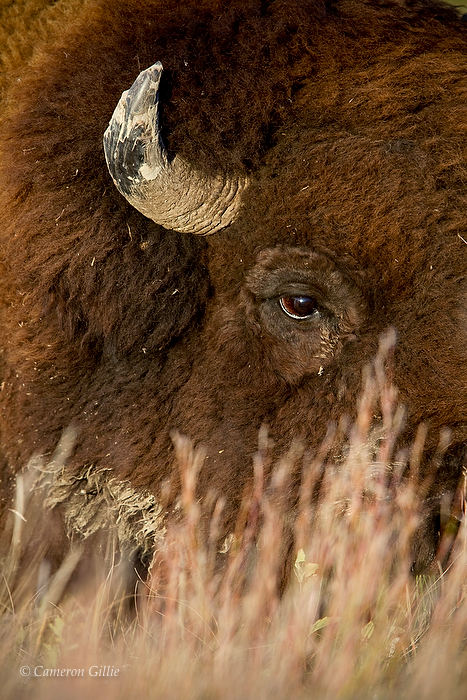
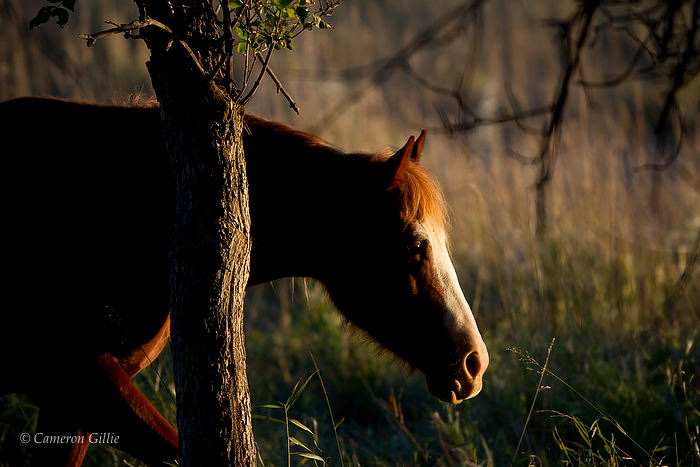
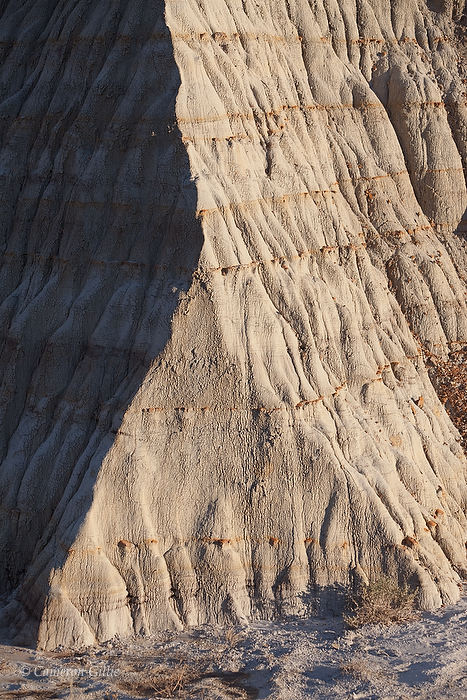
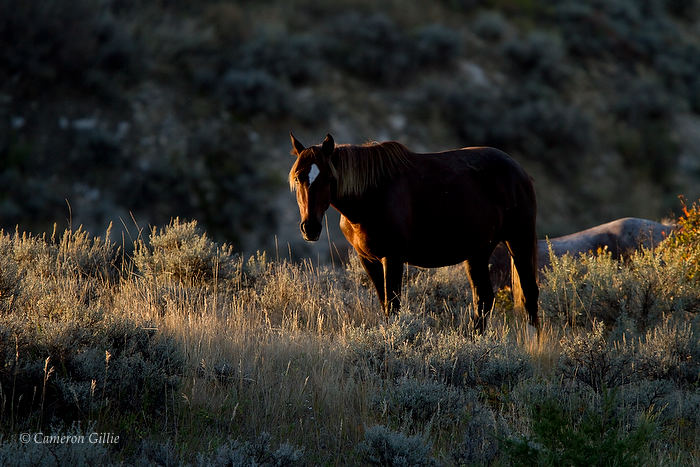
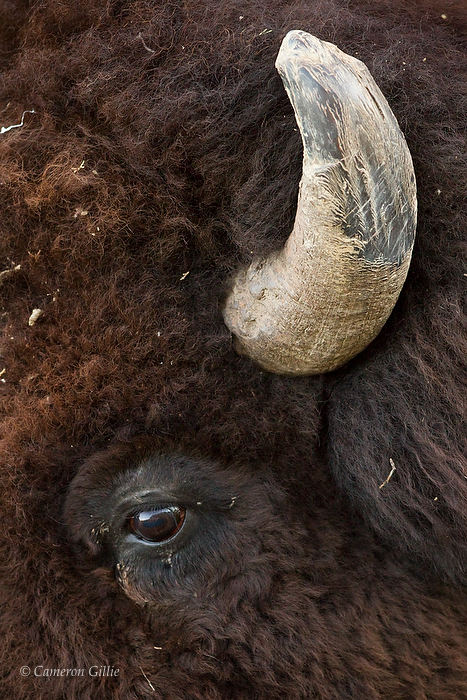
just an absolute paradise that I must go see. thank you for sharing these gorgeous images… I loved them all.
Fantastic images as always, Cameron.
Cameron, I just saw these. The texture of the bison is amazing – I almost expect the screen to turn fuzzy when I touch it. These are fantastic!
I think you should do a caption contest for the two prairie dogs barking. That could be on a card.
That’s a good idea. It is quite a show they are putting on. I have named this print “Prairie Dog Song”